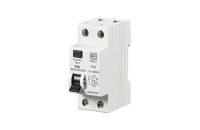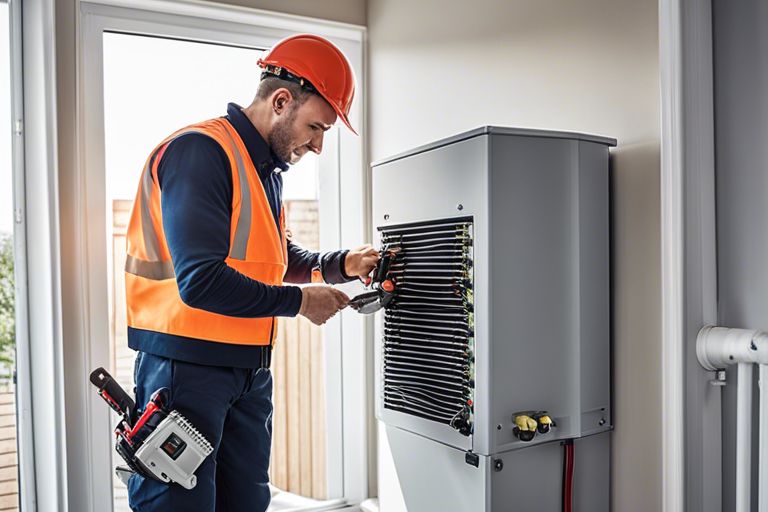There’s no denying the importance of staying up to date with the latest 18th Edition Consumer Unit Regulations when it comes to electrical safety in your home or workplace. These regulations, which came into effect in 2022, are designed to protect against the dangers of overload, residual current leakage, and potential fire hazards. In fact, failure to comply with these regulations could put your property and occupants at serious risk.
From the requirement for RCD protection for socket outlets and lighting circuits to the need for surge protection in certain areas, the 18th Edition Consumer Unit Regulations have raised the bar for electrical safety standards. Whether you’re considering a new installation or updating an existing consumer unit, it’s crucial to ensure compliance with these regulations to keep your property safe and secure.
Understanding Consumer Units
Definition and Function
For every home or business, the consumer unit serves as the control center for electricity, necessary for ensuring safety and efficiency in electrical installations. This device reroutes the incoming electricity supply to various circuits within the building, allowing for individual circuit control and protection against overload and earth leakage. The consumer unit, also known as a fuse box or fuse board, is a critical safety requirement that safeguards both cables and appliances from potential fire hazards, as well as protecting individuals from electric shock.
Components of a Consumer Unit
Components within a consumer unit play a crucial role in ensuring the safety and functionality of the electrical system. These components, such as residual current devices (RCDs), mini circuit breakers (MCBs), and surge protection devices (SPDs), work together to provide necessary circuit protection against various electrical faults, overloads, and disturbances. The inclusion of RCDs in consumer units is vital to protect socket outlets and lighting circuits from residual current leakage, reducing the risk of electric shocks for occupants.
It is important to understand how each component functions within the consumer unit to ensure optimal electrical safety and performance. Proper installation and selection of these components are key considerations when setting up a consumer unit to meet the specific needs of a property.
Key Changes in the 18th Edition Regulations
Protection Against Overload

Some key changes in the 18th Edition Regulations focus on enhancing protection against overload. Edition It is now required that all electrical circuits are safeguarded from overload, which can lead to potential fires. This means that the consumer units must be equipped with the necessary protection devices to mitigate the risk of overload.
Residual Current Leakage Protection

Some significant updates in the 18th Edition Regulations pertain to Protection addressing residual current leakage. Consumer units must now provide protection against residual current leakage to prevent electric shocks. This is achieved through the inclusion of Residual Current Devices (RCDs) in the consumer units, ensuring a higher level of safety for both the property and its occupants.
Regulations It is crucial for consumer units to meet the latest regulatory standards to ensure optimal safety. The inclusion of RCDs in the consumer units is a crucial aspect of compliance with the 18th Edition Regulations, providing added protection against the dangers of residual current leakage and electric shock.
Non-Combustible Materials for Consumer Units

For consumer units installed in domestic households, the 18th Edition Regulations mandate the use of For non-combustible materials. This requirement aims to contain any potential fires within the consumer unit itself, preventing them from spreading and causing further damage. By using non-combustible materials, the consumer units are better equipped to withstand fire-related incidents.
Protection Ensuring that consumer units are constructed with non-combustible materials is crucial in complying with the latest regulations and upholding safety standards. This requirement underscores the importance of using materials that can withstand fire exposure, enhancing the overall safety of electrical installations.
Consumer Unit Types and Designs
After discussing the 18th Edition Consumer Unit Regulations, it’s crucial to understand the different types and designs of consumer units available. Consumer units play a crucial role in every electrical installation, ensuring safety and proper distribution of electricity within a building. There are various consumer unit types, each designed to cater to specific needs and requirements, ranging from standard ‘Amendment 3’ units to IP rated units. Importantly, the choice of consumer unit should align with the property’s specifications and comply with the latest regulations.
| Consumer Unit Type | Description |
Standard ‘Amendment 3’ Consumer Unit  |
Most common type of consumer unit, surface-mounted, features hinged front lid. |
|
Duplex Consumer Unit |
Consumer unit with circuits arranged over two rows, often used in larger buildings. |
|
Flush Consumer Unit
|
Similar to ‘Amendment 3’ but recessed in a wall for aesthetic reasons. |
|
IP Rated Consumer Unit
|
Waterproof unit for wet areas, crucial for locations subjected to water ingress. |
Standard ‘Amendment 3’ Consumer Units
An crucial component in most installations, standard ‘Amendment 3’ consumer units are known for their durability and functionality. These units typically feature a surface-mounted, metal casing with a hinged front lid for easy access during maintenance. The ‘Amendment 3’ consumer units are designed to meet the latest regulations, ensuring the safety and compliance of electrical installations.
Duplex Consumer Units
An integral part of larger buildings, duplex consumer units offer a versatile solution for managing multiple circuits effectively. With circuits arranged over two rows, these units provide adequate space and organization for intricate electrical systems. It allows for better distribution and isolation of power to various parts of the building, enhancing efficiency and safety.
It is crucial to consider the specific requirements of the property when selecting consumer unit types and designs. Each type serves a distinct purpose and caters to different needs, ensuring seamless operation and compliance with regulations. The choice of consumer unit can significantly impact the overall functionality and safety of an electrical installation.
If you’re looking to upgrade or install a new consumer unit, consult with a qualified electrician to determine the most suitable option for your property.
Installation Considerations
Location and Purpose
On every electrical installation project, the location and purpose of the consumer unit should be carefully considered. Understanding where the consumer unit needs to be installed and its intended use is crucial in determining which type of consumer unit to purchase. For instance, if the unit is intended for a wet area, such as a pool pump or spa, opting for an IP rated consumer unit is a critical safety decision. In contrast, a garage consumer unit would be more suitable for an outbuilding like a shed or garden office.
Determining the Number of Ways and Modules
An necessary step in choosing the right consumer unit is determining the number of ways and modules required. This involves planning the number of banks of circuits needed to operate separate electrical components within the property. Each circuit requires a certain number of modules, and it’s advisable to allow for extra modules to accommodate any future changes or additions to the circuit layout. A thorough assessment of the property’s electrical needs will guide the selection of the appropriate consumer unit with the correct number of ways and modules.
Determining the number of ways and modules is a crucial aspect of installing a consumer unit, as it directly impacts the functionality and safety of the electrical system. Proper planning and consideration of future requirements are key in ensuring the consumer unit can adequately meet the property’s electrical demands.
Circuitry Prioritization
Determining the priority of circuits within the property is another important consideration during the installation of a consumer unit. Some circuits may require special attention and isolation for safety or operational purposes. For example, circuits powering necessary devices like smoke detectors, security alarms, or home office workstations should be prioritized to prevent power disruptions in case of faults or overloads in other circuits.
Properly prioritizing circuits ensures that critical electrical components receive the necessary protection and uninterrupted power supply, enhancing the overall safety and functionality of the electrical installation.
Specifics of 18th Edition Requirements
Transient Overvoltage Protection Once again, the 18th edition consumer unit regulations introduce the requirement for a risk assessment to determine if a property is at risk of transient overvoltage from lightning strikes or switching loads, necessitating surge protection. This is crucial in preventing serious injury or loss of human life due to power surges.
Protection Against Thermal Effects For protection against fire, burns, and overheating caused by arc faults, the regulations now recommend the installation of Arc Fault Detection Devices (AFDDs) in certain circumstances. These devices play a vital role in ensuring the safety of electrical installations and reducing the risk of potential hazards.
Fire-Resistant Cable Support Systems
Requirements On the topic of fire safety, all cable support systems within a building must be constructed from appropriate fire-resistant materials to prevent premature collapse in the event of a fire. This regulation extends to all aspects of cable and cable management installations, emphasizing the need for utmost safety and compliance.
Cable In compliance with the 18th edition regulations, fire-resistant cable support systems are vital components of a safe and secure electrical installation. By utilizing materials that can withstand high temperatures and resist fire hazards, these systems contribute significantly to overall safety standards.
RCD Protection for Circuits
Protection Thermal overloads and earth leakage risks are effectively mitigated through the mandatory requirement for RCD protection for all socket outlets with a rated current not exceeding 32A and lighting circuits within homes. This measure enhances the overall safety and reliability of electrical circuits in residential settings.
Compliance and Certification
Certifying New Installations
Not certifying new installations in accordance with the 18th Edition Consumer Unit Regulations is a serious offense and can lead to safety hazards. All installations of new consumer units require an EIC (Electrical installation Certificate) to be issued by a qualified electrician to confirm the work complies with IEE wiring regulations. This certification is crucial to ensure that the installation meets the necessary safety standards, protecting both the property and its occupants.
Handling Pre-18th Edition Installations
Compliance with the 18th Edition Consumer Unit Regulations is vital even for pre-existing installations. Any consumer units installed before 1st January 2019, in accordance with earlier editions of the regulations, may not comply in every aspect with the 18th edition regulations. However, there is no requirement to replace them if they are safe and don’t have any defects. It is advisable to have a qualified electrician assess these older installations to ensure they meet current safety standards.
To wrap up
With this in mind, it is crucial to adhere to the 18th Edition Consumer Unit Regulations when installing or updating consumer units in domestic settings. These regulations ensure the safety of electrical installations by protecting against overload, residual current leakage, and other potential hazards. From considering transient overvoltage protection to the use of Arc Fault Detection Devices, the regulations provide comprehensive guidelines for ensuring the electrical safety of homes and businesses.
For peace of mind and compliance with the latest standards, always consult a qualified electrician when installing or updating consumer units. They can provide expert advice on selecting the right consumer unit for your specific requirements and ensure that the installation meets all necessary regulations. By following the 18th Edition Consumer Unit Regulations, you can enhance the safety and efficiency of your electrical system.





